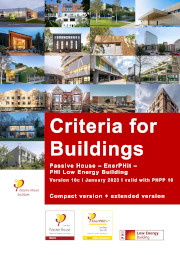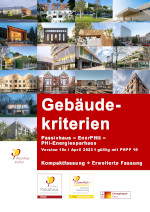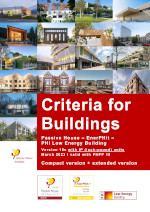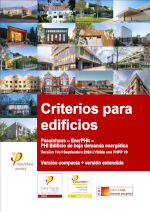Energy standards
The Passive House Criteria for Buildings were set by the Passive House Institute in the late 1990’s. They precisely define the different requirements which a building must fulfil in order to achieve the highly efficient Passive House Standard. In addition to the Passive House Standard, the current document containing the Criteria also includes the EnerPHit Standard that was introduced in 2010 for building retrofits using Passive House components, and the requirements for the PHI Low Energy Building which were introduced in 2015.
All standards can be applied in all climate zones worldwide. They apply for residential buildings as well as for most non-residential buildings (e.g. office and educational buildings)Passive House Classic, Plus and Premium
Passive House buildings are characterised by especially high levels of indoor comfort with minimum energy consumption. The Passive House Standard offers excellent economic efficiency especially for new builds. |
EnerPHit Classic, Plus und Premium
EnerPHit is the established Standard for refurbishment of existing buildings using Passive House components. Despite the slightly higher energy demand, it offers virtually all the advantages of the Passive House Standard. The EnerPHit Classes Classic, Plus or Premium can be achieved depending on the use of renewable energy sources |
Low Energy Building
The PHI Low Energy Building Standard is suitable for buildings which cannot attain the criteria for Passive House Classic for various reasons, but still offer many of its advantages |
Criteria for Buildings
The Criteria for Buildings describe the specific requirements defined for achieving each of the standards.
They are published by the Passive House Institute in German, English and Spanish.
Version 10c in English- SI units |
Version 10c in German |
Version 10c in English - IP units |
Previous versions of the criteria
Previous versions of the building criteria can be found in the archive.
Relevant modifications compared to previous versions are described in section 1 of the document.
Criteria for Buildings in other languages
Translations into other languages exist and are produced by various partners and Passive House organisations worldwide. Please note that translations of criteria are purely informative and not binding:
Criteria for Buildings in other languages
If you would like to translate the criteria into a specific language, please contact the Passive House Institute.
Criteria under development
New approaches for building certification are under development, and can already be used for projects as part of a test phase. These include:
- EnerPHit Unit: EnerPHit Unit is a special application of the EnerPHit building component method. Single retrofitted residential and commercial units in buildings with more than one unit can be certified with this option. For this, the unit under consideration must be completely retrofitted using Passive House components. The rest of the building won't be taken into account in the certification.
- Core & Shell: A certification track for non-residential buildings designed to be generally suitable for office use and which the owner rents out in part or entirely under the method known as core & shell. With this method, in addition to having the full thermal envelope completed, buildings must include at least: units and vertical distribution for ventilation, heating, cooling and DHW; lighting in common areas; elevators; external shading (if needed). All other systems and equipment are installed by the tenant. A document with the technical minimum requirements for the tenant fit-out (TMRT) must be produced for certification and included as part of the lease agreement. Tenants install the fit-out in the leased space according to the TMRT.
The preliminary versions of these criteria are available upon request and may be used for the certification of projects only upon written confirmation from the Building Certifier and the Passive House Institute. If you are interested in any of these options, please contact the Passive House Institute or an accredited Building Certifier.
See also:
Advantages of certification
Process
Consulting
Building Certification Guide
Building certifiers
Plaque for certified Passive Houses
| Next Courses |
PHPP Expert
Passive House Designer / Consultant
Construction Verifier
Site Supervisor
![]() read more
read more
e-learning
| Events |
iPHA Webinar "Project Spotlight: The CLT 8-floor ANMF hotel in Melbourne, Australia with heritage overlay." | November 12, 2025
![]() read more
read more
![]() Passive House Open Days |
Passive House Open Days |
7 - 9 November 2025
![]() read more
read more
![]() 24 - 25 April 2026, Essen, Germany
24 - 25 April 2026, Essen, Germany
![]() read more
read more
| Component Database |
 Passive House
Passive House
Component Database
read more
| Projects |
| New developments |
![]() designPH
designPH
read more
![]() NEW: PHPP 10 (2021)
NEW: PHPP 10 (2021)
read more
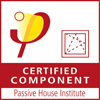 Seals for Certified Passive House Components
Seals for Certified Passive House Components
read more
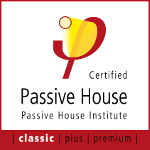 Passive House Classes,
Passive House Classes,
Classic, Plus, Premium
read more
 EnerPHit -
EnerPHit -
PHI certification for retrofits
read more
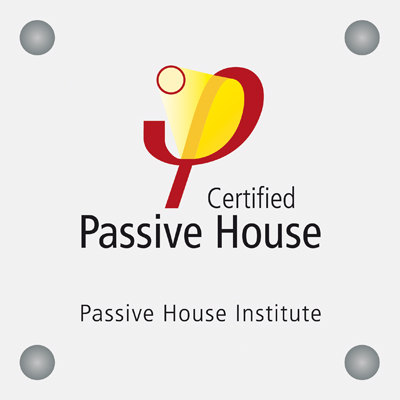 Wall plaque
Wall plaque
for certified Passive Houses
read more
| Press releases |
| Research & Literature |
![]() Passive Houses for different climate zones
Passive Houses for different climate zones
more
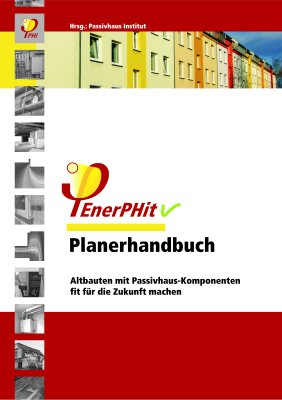 Retrofits with Passive House components -
Retrofits with Passive House components -
EnerPHit Planner Handbook
(in German)
 Passive House Retail Stores now out
Passive House Retail Stores now out
Overview of contents
(in German)

